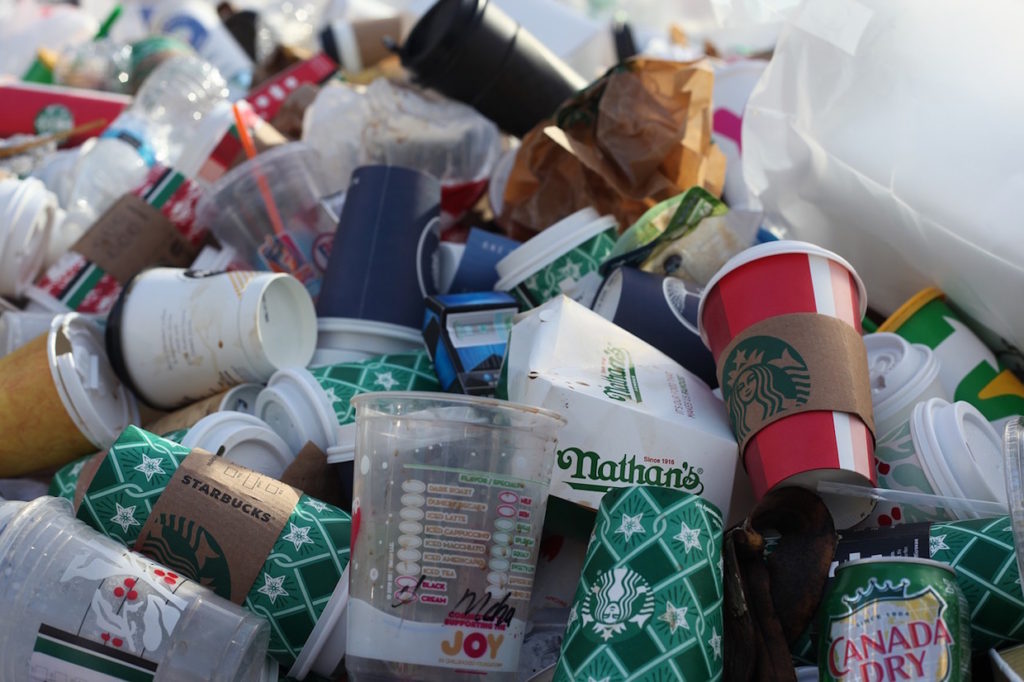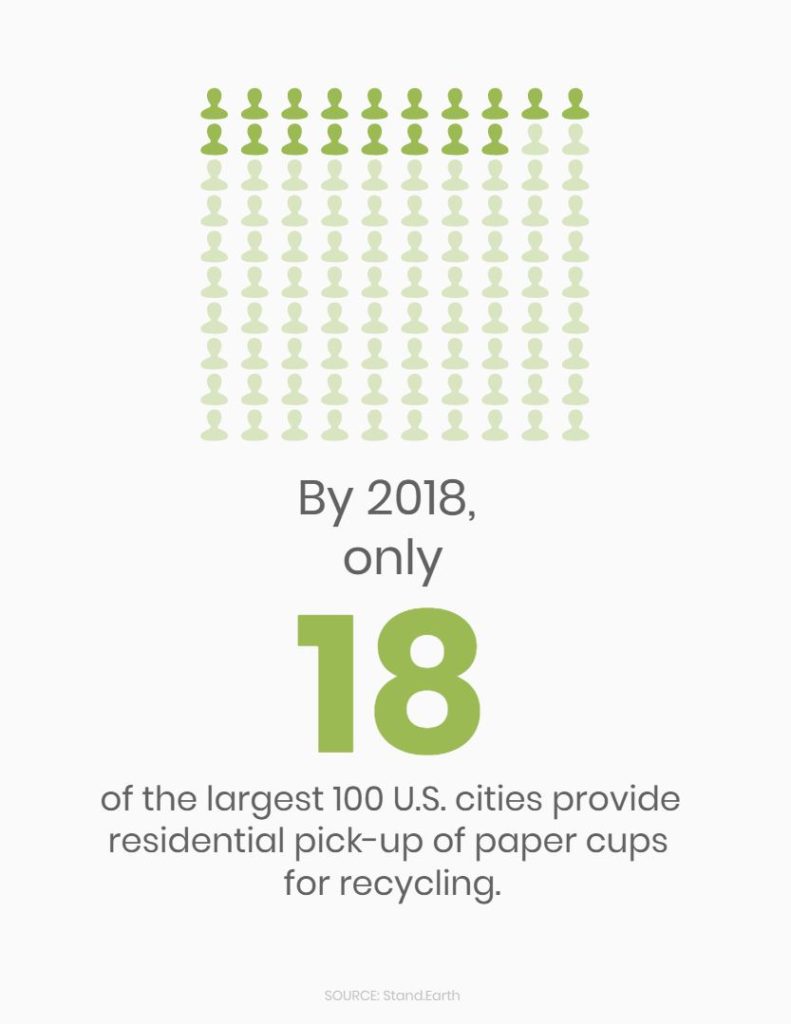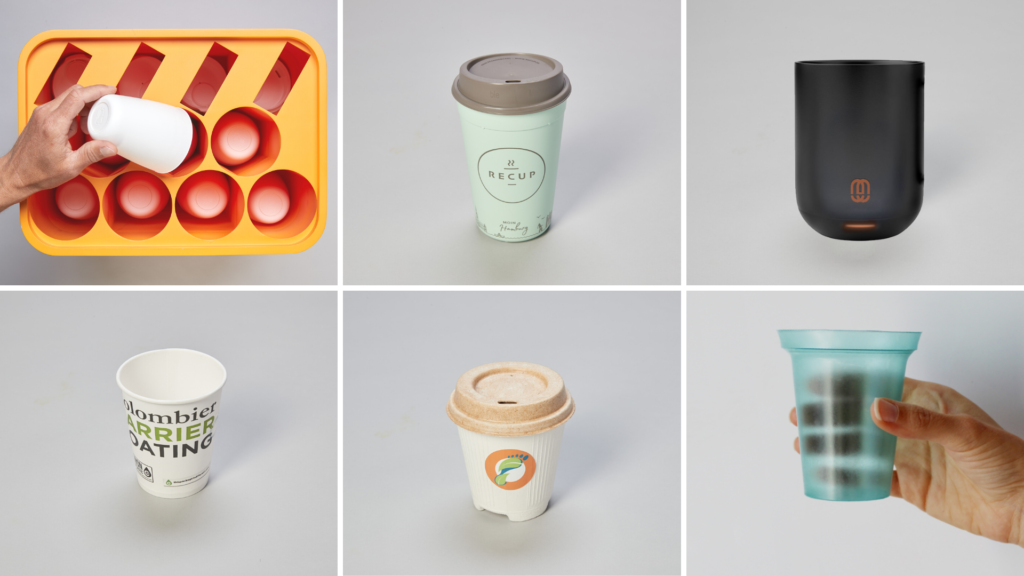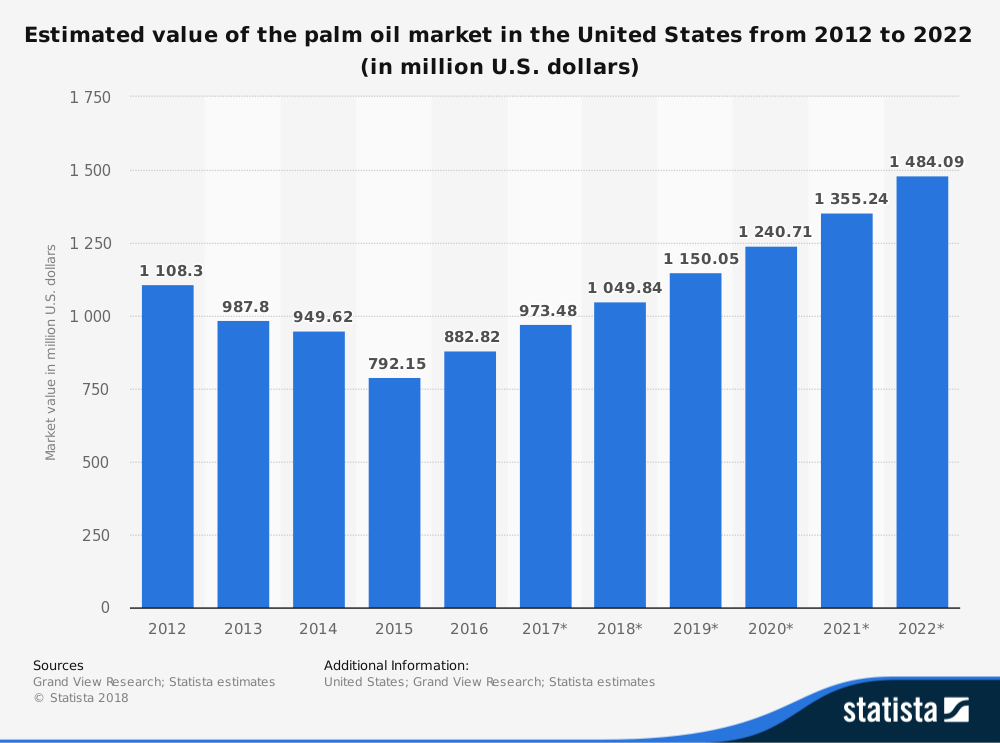
People get used to grabbing a cup of Starbucks coffee before starting their day. But, would you mind spending more on your single-use coffee cup? Apparently, no one would do that. While since 2020, customers will be charged an extra 25 cents if you drink in a disposable cup at any shop in Berkeley, California. It sounds like a great way to cut down on disposable coffee cups, but for chains like Starbucks, which goes through about 6 billion cups a year, this represents no less than an existential dilemma, and Starbucks needs a greener solution to handle its cup problem.
Litter Reduction Ordinance, the policy passed by Berkeley’s City Council in January 2019, is designed to reduce single-use food ware from entering the landfills and 25 cents paper cup fee is part of it. By far, it is the first and the hardest line drawn to-date against single-use cup waste by any U.S. municipality. Although it is not the first worldwide policy to combat the use of disposable coffee cups, its emergence marks that the nation started to say ‘no’ to those environmentally-friendly single-use paper cups.
“Most people don’t know this, but Starbucks paper cups are not recyclable in most cities across the U.S. because the cups are lined with plastic. In today’s world, a paper cup is no longer just a paper cup. It’s plastic pollution,” said Ross Hammond, the former U.S. Campaigns Director for Stand.earth.
As Hammond said, the majority of customers reasonably think that Starbucks single-use paper cups are environmentally friendly and can be completely recycled. Starbucks, the most successful worldwide coffee chain, operates over 28,000 stores across the globe. People assume these cups with the green mermaid logo will get recycled and turned into new products after throwing them in the recycle bin. However, Starbucks disposable cups cannot actually be 100 percent recycled.
Why single-use cups are hard to recycle
While drinking a Grande size cup of Americano in the morning, look out for the statement at the bottom that reads “This cup is made with 10 percent post-customer recycled fiber. Do not microwave.” The main reason why Starbucks does not recommend the cups be put in the microwave is because each one is lined with a thin layer of 100 percent oil-based polyethylene plastic, a waterproof material to hold liquids safely.
According to research from Creative Mechanisms, a Pennsylvania-based engineering company that specializes in plastics, polyethylene is an incredibly useful commodity plastic. Because of the diversity of polyethylene variants, it is incorporated into a wide range of applications. It is always being used to make containers, plastic bags and wraps.
Although the polyethylene could be recycled the same way as paper, the current technology is not widespread across the country. This is what makes the polyethylene such a large pollution problem. According to the data from Stand.earth, a non-profit environmental organization also located in Seattle along with Starbucks, is one of the organizations and activists that is pushing Starbucks to pay more attention to environmental issues, only 18 of the largest 100 U.S. cities provide residential pick-up of paper cups for recycling. Most recycled paper mills are not able to separate the polyethylene from the paper cups due to the lack of the recycling capacity of polyethylene.

Other research from the Carton Council shows that only three paper recycling mills in the U.S. can process plastic-coated paper. These mills make up less than 1percent of the over 450 pulp and paper mills in the U.S.
In the end, most cups end up in a landfill.
In addition to the landfill, those paper cups and other kinds of trash such as paper box, are wrapped and exported to China. Jim Ace, the senior campaigner for Stand.earth, explained that compared with landfills, China could process much of the waste and turned it into new products, and the price of shipping commodities to China is very cheap. China was the biggest garbage-importing country across the world, disposing of over half the world’s garbage in the past two decades. However, this changed after the Chinese government announced a ban on imported trash at the end of 2017.
Ace also pointed out that, as the fastest-growing market for Starbucks, China doesn’t want to receive more trash from North America. He says this is because China already has to dispose of large amounts of garbage from their local market. China’s restrictions on the import of waste will indirectly lead Starbucks and other companies to increase trash in landfills across the U.S.
‘To be charged rather than get discounts’
Besides the policy introduced by Berkeley, the current incentive plan in the U.S. launched by Starbucks allows customers to receive 10 cent discounts if they enjoy Starbucks drinks using their mugs or cups, but only 1.4 percent of Starbucks’ beverages were sold in reusable cups as of spring 2017. However, Todd Paglia, the executive director of Stand.earth, thinks that this is not enough of a discount to encourage customers to bring their own cups when they normally pay $4 or $5 to purchase a cup of coffee. He also suggested the discount should be increased at least 50 cents or even $1 per cup.
Ace held similar perspectives to Paglia’s. He thinks changing the current incentive plan from a positive to a negative thing would have more of an impact on customers’ behavior. “If people want to use single-use paper cups, they have to be charged rather than get discounts when they bring their own cups,” Ace said.
The government plays a crucial role in reducing the use of disposable coffee cups. As an iconic brand, Starbucks does not want to revise their current market plan due to the fierce market competition and customer loyalty. However, Ace says that the government can push companies to change through establishing policies or drafting documents.
“They’re smart. They know that. If they don’t take action, it actually is worse for them,” Ace said. “I understand why they do it, but I think the example of the UK shows us that, as soon as either a city or a state government starts to take action on it, the private sector gets very active, very quickly. It’s an interesting dynamic.”
In July 2018, all Starbucks stores in the U.K. were required to add 5 pence, about 25 cents, to each single-use cup due to the introduction of ‘Latte Levy’ by the U.K. Parliament. This was to encourage people to reduce using disposable cups and cut down the enormous quantity of paper cups that could not be entirely recycled in the U.K. According to a report from the U.K. Parliament, more than 2.5 billion disposable coffee cups are used in the U.K. each year, but only less than 1 in 400 cups (0.25%) is properly recycled. Thanks to the rapid growth of coffee shops in the U.K. over the past 20 years, disposable coffee cups consumption will approximately reach 3.75 billion per year by 2025 without any regulation.
The trial worked. Six weeks after the ‘Latte Levy’ was introduced, the use of reusable cups in 35 selected Starbucks shops across parts of central and west London increased by about 150 percent, according to a preliminary assessment by Starbucks. Although the proportion of customers bringing in their own mugs was still modest – only 5.9 percent compared to 2.2 percent, the ‘Latte Levy’ was still seen as a long-term and effective way to control the use of disposable coffee cups in the U.K, according to a report by Independent.
“We are encouraged by the initial results of our trial that show that by charging 5p and increasing communication on this issue, we can help to reduce paper cup use,” said Jason Dunlop, the chief operating officer of Starbucks in the U.K.
In response to growing environmental problems, other European countries followed Britain’s lead in reducing the use of disposable coffee cups. Up to 200 million disposable coffee cups are thrown away every year in Ireland, according to MyWaste, an Irish government-funded organization. In November 2019, Ireland imposed ‘Latte Levy’ to cut down on single-use coffee cups. Customers would pay an additional 10 pence to the price of a takeaway coffee cup.
Besides, Germany introduced the ‘FreiburgCup’ scheme in 2016. The project aims to encourage people to use recycled cups in coffee shops. It is very simple for customers to participate. Customers only need to pay a deposit of one euro when ordering coffee to use the reusable coffee cups. After drinking the coffee, they can return the cups to any coffee stores and get the deposit back. For the convenience of the customers, around 60-70% of local coffee shops participated in the project in Germany.
South Korea, another leading country in coffee consumption, announced a campaign to curb the use of single-use at coffee shops in August 2018. Shop owners could be fined up to 2 million won ($1,780) if they are found to offer disposable cups to consumers frequently. In order to promote the implementation of the campaign, the government also provided financial support for recycling firms by 1.7 billion won ($1.5 million).
The cup of the future

Starbucks is taking action in the face of growing policy opposition.
In March 2018, Starbucks announced its new environmental plan regarding disposable paper cups. To create an innovative sustainable cup in the future, Starbucks and McDonalds pledged a fund of $10 million for the Closed Loop Partners, an investment platform that funds sustainable consumer goods, recycling and the development of the circular economy. As an essential part of investments, the NextGen Cup Challenge, an innovation challenge to redesign the fiber to-go cup, was created by the Closed Loop Partners.
The NextGen Cup Challenge attracted 480 entries, ranging from amateurs to industrial design firms. All 12 of the winning entries at the first stage came up with greener alternatives to the plastic lining, such as water-based coatings. Up to six of 12 winners will enter a business accelerator, where their innovations could be tested whether they can scale or not.

“The level of interest we saw in the Challenge demonstrates a real appetite for long-lasting, sustainable packaging solutions,” said Kate Daly, Executive Director of the Center for the Circular Economy at Closed Loop Partners. “This level of industry collaboration in support of the NextGen Cup Challenge is really exciting, and we look forward to building on this momentum to encourage more innovative solutions. Fully recoverable fiber to-go cups are just the beginning.”
However, Starbucks was forced to make a promise to the public to quell the anger of people in 2008 that their paper cups would be 100 percent recyclable by 2015. Starbucks also promised that they would establish an incentive plan, which would encourage approximately one-quarter of their customers to bring their own coffee cups to the store. To achieve this goal for the environment, Starbucks also had a partnership with the Massachusetts Institute of Technology, aimed to develop new disposable paper cups.
But Starbucks failed to fulfill their commitments, saying that they were unable to find an available plan to execute after attempting for two years. Therefore, the company adjusted its promise for the number of customers they hoped would bring their own cups to the store from 25 percent to 5 percent.
Although Starbucks had failed to follow its commitments before, Paglia maintained a relatively optimistic attitude to this new environmental plan in response to the public pressure.
“There are more and more big Industry players working together to solve this problem, so I think that looks pretty promising,” Paglia said. “I would say that none of this would be happening if the public and if Stand.earth didn’t pressure Starbucks to live up to its original promise. I think that they are now going to do that.”

